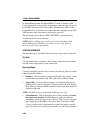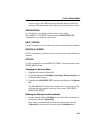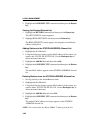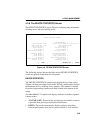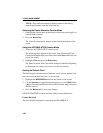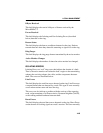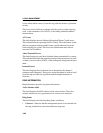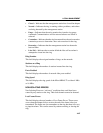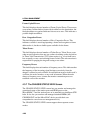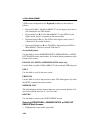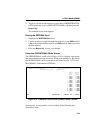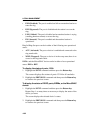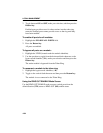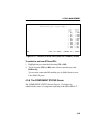
LOCAL MANAGEMENT
4-28
Frame Copied Errors
This field displays the total number of Frame Copied Errors. These errors
occur when a station finds a frame with its address as the destination, but
finds the address recognized indicator bits not set to zero. This indicates a
possible duplicate address.
Rcvr Congestion Errors
This field displays the total number of Rcvr Congestion Errors. This
indicates a station is receiving/repeating a frame and recognizes a frame
addressed to it, but has no buffer space available for the frame.
Token Errors
This field displays the total number of Token Errors. Token Errors occur
when an active monitor does not see a token circulating on the ring before
its Timer Valid Transmission (TVX) time expires (e.g. a lost frame error
has occurred), or sees a recirculating frame or token. The active monitor is
responsible for purging the ring and issuing a new token.
Frequency Errors
This field displays the total number of frequency errors. This indicates that
the frequency of the incoming signal deviates excessively from the
adapter’s onboard crystal oscillator. It could indicate an error in this node’s
oscillator, the active monitor, or any node in between. When the node
detects a frequency error, it enters the monitor contention process to
establish a new active monitor.
4.3.7 The CHASSIS STATUS VIEW Screen
The CHASSIS STATUS VIEW screen lets you monitor and manage the
operational status of the station ports and RI/RO ports on the
MicroMMAC-T and the station ports on its attached non-intelligent STH
hubs. It also lets you monitor and managed attached BRIMs (the
CR-BRIM-W/T and the MicroSNAC device provide their own
comprehensive console access management tools).
The CHASSIS STATUS VIEW screen supports three separate screen
modes:



